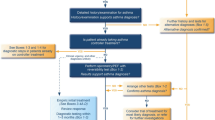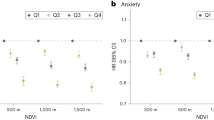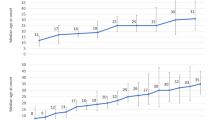Abstract
Background
Children are potentially more susceptible to the adverse effects of pesticides due to more sensitive organ systems and lower capacity to metabolize and eliminate chemicals compared to adults. The health risks are particularly concerning children with asthma, living in low-income neighborhoods in multi-family housing because of their impaired respiratory health, and factors associated with low-income, multi-family environments.
Objective
To assess the association between pesticide exposure and asthma morbidity among children 7–12 years residing in low-income, multi-family housing.
Methods
The concentrations of seven urinary pesticide biomarkers: 3,5,6-trichloro-2-pyridinol (TCPy), 2-isopropyl-4-methyl-6-hydroxypyrimidine, para-nitrophenol (PNP), 3-phenoxybenzoic acid (3-PBA), 4-fluoro-3-phenoxybenzoic acid, trans-3-(2,2-dichlorovinyl)-2,2-dimethyl-cyclopropane-1-carboxylic acid, and 2,4-dichlorophenoxyacetic acid (2,4-D) were measured. Children (n = 162) were followed for one year with three measures of pesticides biomarkers. Associations between individual biomarkers and asthma attack, asthma related health care utilization, and fraction of exhaled nitric oxide (FeNO), adjusting for demographic and household factors were examined with Generalized Estimating Equations (GEE). Weighted Quantile Sum (WQS) regression was used to examine the effect of pesticide mixture on asthma attacks and asthma-related health care utilization (HCU).
Results
In adjusted GEE models, positive non-significant associations were found between PNP and HCU (adjusted Odds Ratio(aOR):2.05 95% CI:0.76–5.52) and null associations for 3-PBA and HCU (aOR:1.07 95% CI: 0.88–1.29). Higher concentrations of PNP and 2,4-D were associated with significantly lower FeNO levels (PNP: −17.4%; 2,4-D:−19.74%). The mixture was positively associated with HCU in unadjusted (OR: 1.56 97.5% CI: 1.08–2.27) but not significant in adjusted models (aOR: 1.40 97.5% CI: .86–2.29). The non-specific pyrethroid biomarker 3-PBA at baseline contributed the greatest weight to the index (45%).
Significance
There were non-significant associations between pesticide biomarkers and respiratory outcomes in children with asthma. There was a suggestive association between urinary pesticide biomarkers and HCU. Further studies with larger sample sizes could help to confirm these findings.
Impact statement
-
Pesticide exposure among children in the urban environment is ubiquitous and there is a dearth of information on the impact of low-level chronic exposure in vulnerable populations. This study suggested that pesticide exposure at concentrations below the national average may not affect asthma morbidity in children. However, different biomarkers of pesticides showed different effects, but the mixture suggested increasing pesticide exposure results in asthma related HCU. The results may show that children with asthma may be at risk for negative health outcomes due to pesticides and the need to further examine this relationship.
This is a preview of subscription content, access via your institution
Access options
Subscribe to this journal
Receive 6 print issues and online access
$259.00 per year
only $43.17 per issue
Buy this article
- Purchase on Springer Link
- Instant access to full article PDF
Prices may be subject to local taxes which are calculated during checkout


Similar content being viewed by others
Data availability
Individuals who would like to access data can contact Dr. Werthmann (dwerthma@tulane.edu) with a specific request for data access.
References
Akinbami LJ, Simon AE, Rossen LM. Changing trends in asthma prevalence among children. Pediatrics. 2016;137:1–7.
Guarnieri M, Balmes JR. Outdoor air pollution and asthma. Lancet. 2014;383:1581–92.
Snowden JM, Mortimer KM, Kang Dufour M-S, Tager IB. Population intervention models to estimate ambient NO2 health effects in children with asthma. J Expo Sci Environ Epidemiol. 2015;25:567–73.
Ye M, Beach J, Martin JW, Senthilselvan A. Pesticide exposures and respiratory health in general populations. J Environ Sci. 2017;51:361–70.
Raanan R, Balmes JR, Harley KG, Gunier RB, Magzamen S, Bradman A, et al. Decreased lung function in 7-year-old children with early-life organophosphate exposure. Thorax. 2016;71:148–53.
Kim K-H, Kabir E, Jahan SA. Exposure to pesticides and the associated human health effects. Sci total Environ. 2017;575:525–35.
van Maele-Fabry G, Gamet-Payrastre L, Lison D. Residential exposure to pesticides as risk factor for childhood and young adult brain tumors: a systematic review and meta-analysis. Environ Int. 2017;106:69–90.
Blair A, Ritz B, Wesseling C, Freeman LB. Pesticides and human health. Occup Environ Med. 2015;72:81–82.
Mamane A, Raherison C, Tessier J-F, Baldi I, Bouvier G. Environmental exposure to pesticides and respiratory health. Eur Respi Rev. 2015;24:462–73.
Patino EDL, Siegel JA. Indoor environmental quality in social housing: a literature review. Build Environ. 2018;131:231–41.
Levy JI, Quirós-Alcalá L, Fabian MP, Basra K, Hansel NN. Established and emerging environmental contributors to disparities in asthma and chronic obstructive pulmonary disease. Curr Epidemiol Rep. 2018;5:114–24.
Martín Reina J, Duarte JA, Cerrillos L, Bautista Palomas JD, Moreno, Navarro IM. Insecticide reproductive toxicity profile: organophosphate, carbamate and pyrethroids. J Toxin. 2017;4:1–7.
Alavanja MCR, Bonner MR. Occupational pesticide exposures and cancer risk: a review. J Toxicol Environ Health, Part B. 2012;15:238–63.
Rehman H, Aziz A-T, Saggu S, Abbas ZK, Mohan A, Ansari AA. Systematic review on pyrethroid toxicity with special reference to deltamethrin. J Entomol Zool Stud. 2014;2:60–70.
Chen M, Chang C-H, Tao L, Lu C. Residential exposure to pesticide during childhood and childhood cancers: a meta-analysis. Pediatrics. 2015;136:719–29.
Saillenfait A-M, Ndiaye D, Sabaté J-P. Pyrethroids: exposure and health effects–an update. Int J Hyg Environ Health. 2015;218:281–92.
Mink PJ, Mandel JS, Sceurman BK, Lundin JI. Epidemiologic studies of glyphosate and cancer: a review. Regul Toxicol Pharmacol. 2012;63:440–52.
Koureas M, Tsakalof A, Tsatsakis A, Hadjichristodoulou C. Systematic review of biomonitoring studies to determine the association between exposure to organophosphorus and pyrethroid insecticides and human health outcomes. Toxicol Lett. 2012;210:155–68.
Li AJ, Kannan K. Urinary concentrations and profiles of organophosphate and pyrethroid pesticide metabolites and phenoxyacid herbicides in populations in eight countries. Environ Int. 2018;121:1148–54.
Stanfield Z, Setzer RW, Hull V, Sayre RR, Isaacs KK, Wambaugh JF. Bayesian inference of chemical exposures from NHANES urine biomonitoring data. J Expo Sci Environ Epidemiol. 2022;32:1–14.
Barr DB. Biomonitoring of exposure to pesticides. J Chem Health Saf. 2008;15:20–29.
Zhang Y, Dong T, Hu W, Wang X, Xu B, Lin Z, et al. Association between exposure to a mixture of phenols, pesticides, and phthalates and obesity: comparison of three statistical models. Environ Int. 2019;123:325–36.
Li W, Xiao H, Wu H, Xu X, Zhang Y. Organophosphate pesticide exposure and biomarkers of liver injury/liver function. Liver Int. 2022;42:2713–23.
Xu H, Mao Y, Xu B. Association between pyrethroid pesticide exposure and hearing loss in adolescents. Environ Res. 2020;187:109640.
Pohl HR, McClure P, Anatra-Cordone M. Mixtures of insecticides: pyrethroids, organophosphorus compounds, and carbamates. Agency for Toxic Substances and Disease Registry US Department of Health and Human Services Public Health Service. 2018.
Hu P, Su W, Vinturache A, Gu H, Cai C, Lu M, et al. Urinary 3-phenoxybenzoic acid (3-PBA) concentration and pulmonary function in children: A National Health and Nutrition Examination Survey (NHANES) 2007–12 analysis. Environ Pollut. 2021;270:116178.
Saillenfait A-M, Malard S. Human risk associated with long-term exposure to pyrethroid insecticides. Pyrethroid Insecticides. 2020;92:259–303.
Burns CJ, Swaen GMH. Review of 2, 4-dichlorophenoxyacetic acid (2, 4-D) biomonitoring and epidemiology. Crit Rev Toxicol. 2012;42:768–86.
Perry J, Cotton J, Rahman MA, Brumby SA. Organophosphate exposure and the chronic effects on farmers: a narrative review. Rural Remote Health. 2020;20:4508.
Kumar V, Kumar P. Pesticides in agriculture and environment: impacts on human health. Contam Agric Environ: Health Risks Remediat. 2019;1:76–95.
Davis MD, Wade EL, Restrepo PR, Roman-Esteva W, Bravo R, Kuklenyik P, et al. Semi-automated solid phase extraction method for the mass spectrometric quantification of 12 specific metabolites of organophosphorus pesticides, synthetic pyrethroids, and select herbicides in human urine. J Chromatogr B. 2013;929:18–26.
Prevention C for DC and. NHANES laboratory/medical technologists procedures manual. Atlanta, GA: Centers for Disease Control and Prevention 2001.
Dweik RA, Boggs PB, Erzurum SC, Irvin CG, Leigh MW, Lundberg JO, et al. An official ATS clinical practice guideline: interpretation of exhaled nitric oxide levels (FENO) for clinical applications. Am J Respir Crit Care Med. 2011;184:602–15.
Matt GE, Wahlgren DR, Hovell MF, Zakarian JM, Bernert JT, Meltzer SB, et al. Measuring environmental tobacco smoke exposure in infants and young children through urine cotinine and memory-based parental reports: empirical findings and discussion. Tob Control. 1999;8:282–9.
Coombs KC, Chew GL, Schaffer C, Ryan PH, Brokamp C, Grinshpun SA, et al. Indoor air quality in green-renovated vs. non-green low-income homes of children living in a temperate region of US (Ohio). Sci Total Environ. 2016;554:178–85.
Greenland S, Pearce N. Statistical foundations for model-based adjustments. Annu Rev Public Health. 2015;36:89–108.
Barr DB, Landsittel D, Nishioka M, Thomas K, Curwin B, Raymer J, et al. A survey of laboratory and statistical issues related to farmworker exposure studies. Environ Health Perspect. 2006;114:961–8.
Levin-Schwartz Y, Gennings C, Schnaas L, del Carmen Hernández Chávez M, Bellinger DC, Téllez-Rojo MM, et al. Time-varying associations between prenatal metal mixtures and rapid visual processing in children. Environ Health. 2019;18:1–12.
Carrico C, Gennings C, Wheeler DC, Factor-Litvak P. Characterization of weighted quantile sum regression for highly correlated data in a risk analysis setting. J Agric Biol Environ Stat. 2015;20:100–20.
Buralli RJ, Dultra AF, Ribeiro H. Respiratory and allergic effects in children exposed to pesticides—a systematic review. Int J Environ Res Public Health. 2020;17:2740.
Perla ME, Rue T, Cheadle A, Krieger J, Karr CJ. Biomarkers of insecticide exposure and asthma in children: a National Health and Nutrition Examination Survey (NHANES) 1999–2008 analysis. Arch Environ Occup Health. 2015;70:309–22.
Salameh PR, Baldi I, Brochard P, Raherison C, Abi Saleh B, Salamon R. Respiratory symptoms in children and exposure to pesticides. Eur Respir J. 2003;22:507–12.
Salam MT, Li Y-F, Langholz B, Gilliland FD, Study CH. Early-life environmental risk factors for asthma: findings from the Children’s Health Study. Environ Health Perspect. 2004;112:760–5.
Adamkiewicz G, Zota AR, Fabian MP, Chahine T, Julien R, Spengler JD, et al. Moving environmental justice indoors: understanding structural influences on residential exposure patterns in low-income communities. Am J Public Health. 2011;101:S238–S245.
Lu C, Adamkiewicz G, Attfield KR, Kapp M, Spengler JD, Tao L, et al. Household pesticide contamination from indoor pest control applications in urban low-income public housing dwellings: a community-based participatory research. Environ Sci Technol. 2013;47:2018–25.
Chapman GM, Bravo R, Stanelle RD, Watson CH, Valentín-Blasini L. Sensitive and selective gas chromatography-tandem mass spectrometry method for the detection of nitrobenzene in tobacco smoke. J Chromatogr A. 2018;1565:124–9.
Malinovschi A, Backer V, Harving H, Porsbjerg C. The value of exhaled nitric oxide to identify asthma in smoking patients with asthma-like symptoms. Respir Med. 2012;106:794–801.
O’Brien KM, Upson K, Cook NR, Weinberg CR. Environmental chemicals in urine and blood: improving methods for creatinine and lipid adjustment. Environ Health Perspect. 2016;124:220–7.
Acknowledgements
The authors would like to thank the children and their parents for their participation and our community partners for their assistance throughout the study. We also thank Mark Davis and William Roman for the measurement of the pesticide biomarkers and Connie Sosnoff for the measurement of cotinine.
Funding
This study was funded by the Centers for Disease Control and Prevention (CDC) grant #5UO1EH000990 with supplemental funding from the U.S. Environmental Protection Agency (EPA) interagency agreement #DW-75–9584500 and the U.S. Department of Housing and Urban Development (HUD) interagency agreement # I-PHI-01062.
Author information
Authors and Affiliations
Contributions
DW had full access to the data and takes responsibility for the integrity of the data and accuracy of analysis; DW, FR, GC, AC, MO were involved in the design and conduct of the analysis; DW, FR, GA, TR, AC, MO, GC contributed to the drafting of the manuscript; DW, FR, GA, TR, AC, MO, GC were involved in the editing of the manuscript. All authors approved the manuscript for submission.
Corresponding author
Ethics declarations
Competing interests
The authors declare no competing interests.
Additional information
Publisher’s note Springer Nature remains neutral with regard to jurisdictional claims in published maps and institutional affiliations.
Supplementary information
Rights and permissions
Springer Nature or its licensor (e.g. a society or other partner) holds exclusive rights to this article under a publishing agreement with the author(s) or other rightsholder(s); author self-archiving of the accepted manuscript version of this article is solely governed by the terms of such publishing agreement and applicable law.
About this article
Cite this article
Werthmann, D.W., Rabito, F.A., Adamkiewicz, G. et al. Pesticide exposure and asthma morbidity in children residing in urban, multi-family housing. J Expo Sci Environ Epidemiol (2023). https://doi.org/10.1038/s41370-023-00524-2
Received:
Revised:
Accepted:
Published:
DOI: https://doi.org/10.1038/s41370-023-00524-2



